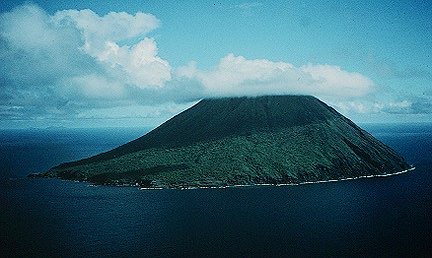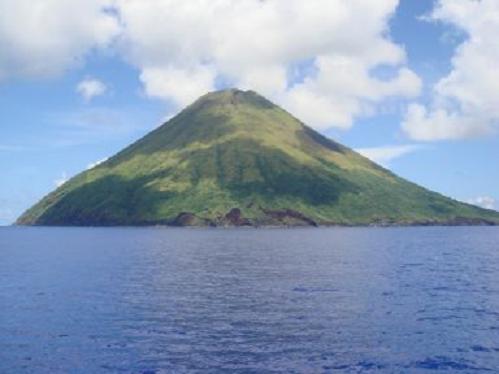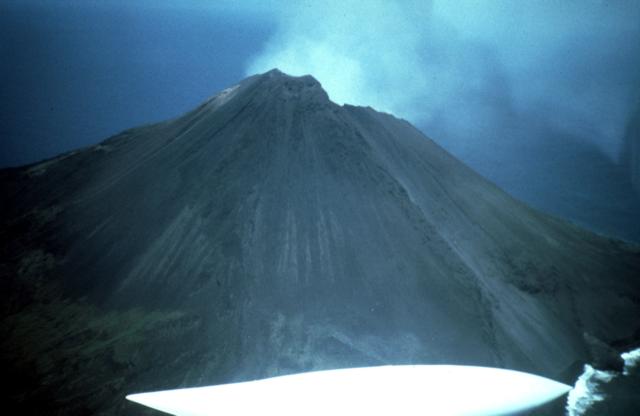Asuncion Island
Asuncion ( Asuncion english Iceland, cham. Assongsong ) is a small, uninhabited volcanic island in the Pacific Ocean. It belongs geographically to the archipelago of the Marianas and politically to the Commonwealth of the Northern Mariana Islands.
Asuncion located 37 kilometers southeast of the Maug Islands and about 100 kilometers north of the island Agrigan. From Saipan, the main island of the Northern Mariana Islands, it is a good 600 km away. The 3.3 km long and about 3 kilometers wide, elliptical shaped island has an area of 7.9 km ². Asuncion is made of the same stratovolcano which is up to 857 meters from the sea rises and in 1906 had his last recorded outbreak.
From a European perspective Asuncion was discovered in 1669 by Spanish missionary Diego Luis de Sanvitores. As the Maug Islands was inhabited until 1695 by Chamorros before the population was at first, and later deported to Saipan to Guam also Asuncion.
From 1899 to 1918 the island, like all the Northern Mariana Islands, a part of the colony of German New Guinea. 1903, the island was leased to a Japanese company. There were hunted birds whose feathers were exported from Japan to Paris and processed there to Hat feathers. 1910 died six Japanese bird hunters on the island from a disease.
The island is covered heavily overgrown crops such as coconut palms, pandanus trees (Pandanus ) or papaya, besides, there are native Pisonia trees. In the Constitution of the Commonwealth of the Northern Mariana Islands the status of the island as uninhabited area that will serve the protection and conservation of natural resources, committed. Since 2009, the island is part of Maraianas Trench Marine National Monument in the United States.










